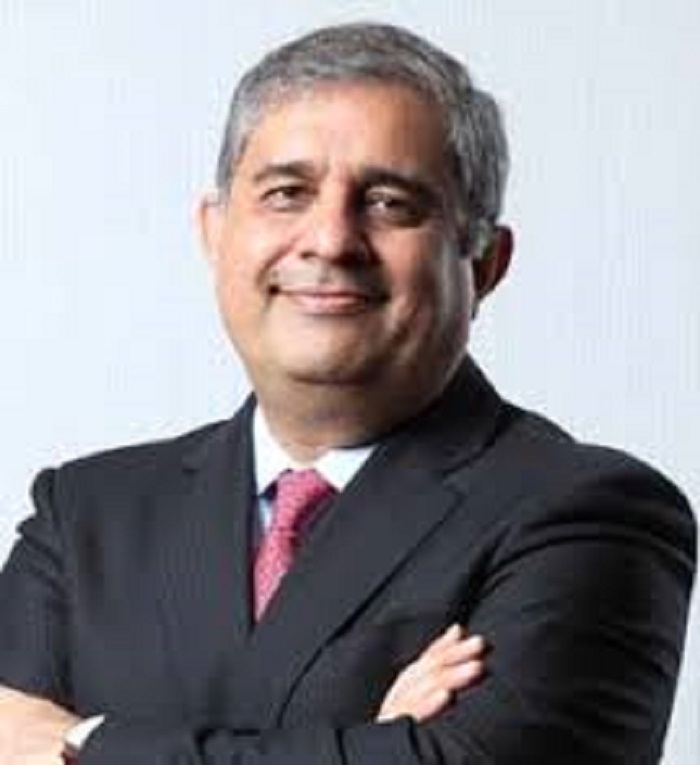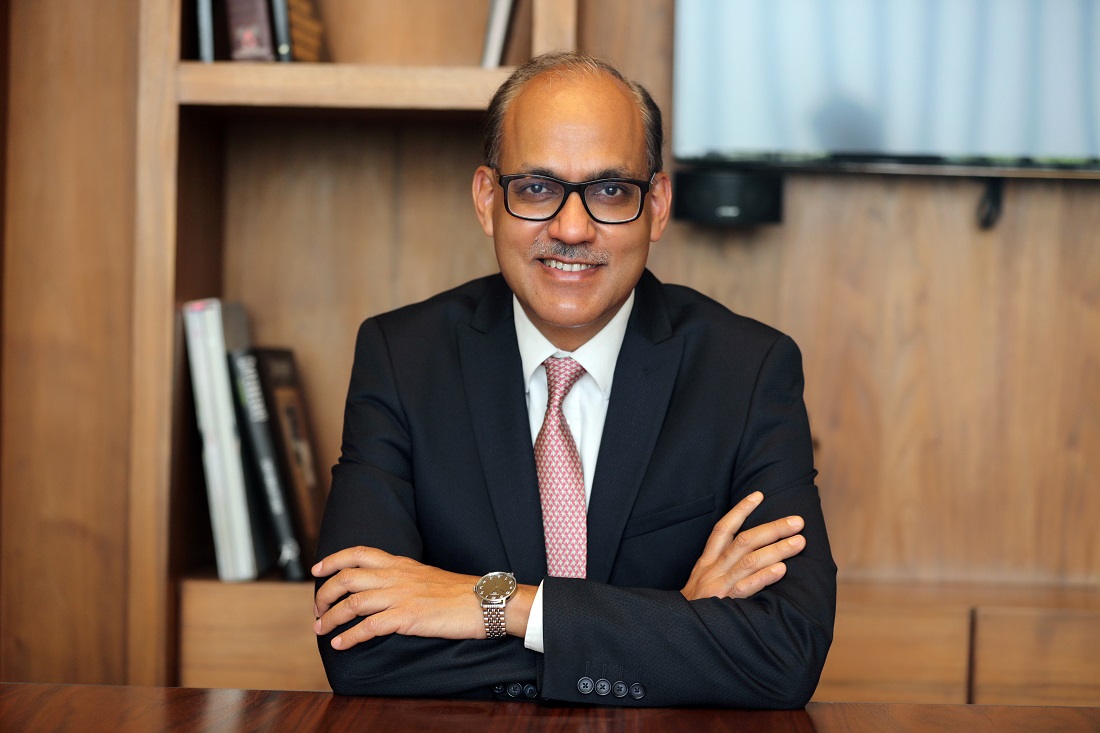Something unusual happened in the sprawling loan market. HDFC Bank let go Rs 50,000 crore of wholesale loans in the June quarter as competition offered lower rates. The country’s largest private sector bank did not want to increase its market share by launching into a price war.
“There was rate dislocation, sometime around May,” said HDFC Bank chief financial officer Srinivasan Vaidyanathan.
HDFC Bank moved up its interest rate after the Reserve Bank of India (RBI) hiked repo rate by 40 basis points in an off-cycle meeting on 4 May. It had become apparent by then that India was getting into an aggressive rate hike cycle with the focus of the central bank being on taming rising inflation.
“We hiked the rate, as did some other banks. But some customers were offered lower rates by other market participants and we did not want to cut back on our loan pricing to keep them,” Vaidyanathan said in an analyst call.
The low pricing also kept Axis Bank out of some of these corporate loans. Despite the third-largest private sector lender reporting a 5% year-on-year contraction in net corporate loans in the June quarter, it stood firm on protecting its pricing.
“We are waiting for the right pricing to resume,” said Axis Bank managing director and CEO Amitabh Chaudhry. “We believe this should happen in the next couple of quarters.”
In the last couple of quarters, the pricing in certain sub-segments of the wholesale side didn’t make too much sense for Axis Bank to chase these loans. The thinking in the bank is that the loan growth should come without negatively impacting its net interest margin (NIM).
In a rising interest rate regime, Chaudhry expects more discipline to return on loan pricing, both on the working capital front and the term loan side. This would fit into Axis Bank’s loan growth going forward. “We are one of the key banks to corporate India. So, we are not too worried about getting loan growth back at the right time,” he told analysts.
While some of the private banks wait for pricing to improve before they aggressively indulge in corporate lending, other banks see an opportunity in loan refinancing. The refinance market is set to get a boost as banks who have acquired corporate loans at very fine rates will have to revise their approach with interest rates climbing across the board. Many of the banks whose corporate book was degrowing will now find space to tap into the refinancing loan market.
State Bank of India (SBI) is looking to grow its corporate loan book from across the spectrum, including through the refinancing route. The bank’s credit is growing at 15%, which it is confident of sustaining throughout the current financial year.
Dismissing any challenge the country’s largest bank faces in its corporate loan book, SBI chairman Dinesh Khara said unutilised working capital limits and term loans aggregate about Rs 5 lakh crore. Besides, the bank has a hefty sanctions pipeline of Rs 1.2 lakh crore.
In the fiscal first quarter ended June, SBI’s advances book grew by Rs 81,000 crore. “While most of it was retail and international lending, the corporate book is also showing signs of growth after a gap. We have a healthy pipeline of sanctions and now drawdowns are happening with demand coming for working capital needs in brownfield projects. We are seeing demand from infrastructure, government-led spending, renewable energy and export credit,” said Saloni Narayan, SBI deputy managing director, Finance.
Even IDBI Bank is looking at a double-digit credit growth this fiscal as companies have started looking to roll out capacity expansions and fund working capital. “Refinance opportunities are helping us to grow the corporate loan book. We are realistic with our pricing. We are seeing companies draw down on their sanctioned loans. Companies in the commodity business are also utilising most of the sanctioned limits,” said IDBI deputy managing director Samuel Joseph.
Loan refinancing, however, has a limited opportunity and banks are expecting credit offtake to really pick up as growth in the economy accelerates.
“I know some banks are giving up loans because of the fine rates they were offering earlier. But we are not looking at refinance opportunities in a big way. We are getting demand for fresh credit from across sectors, both on the corporate and on the retail side. We are also bullish on SME loans,” said Union Bank of India managing director and CEO A Manimekhalai.
Bank credit is on an upswing in recent weeks. As per RBI’s latest data, credit growth of commercial banks is at a near nine-year high of 15.5% for the week ended 26 August. This is the highest year-on-year rise since 1 November 2013 when credit growth was 16.1% over the year-ago period.
Credit growth has seen a resurgence, remaining above 15% for two consecutive fortnights. Bank credit for the fortnight ended 12 August grew at 15.3%. Despite rising interest rates, the credit pick-up has been more broad-based and visible across sectors like housing, road, power, commodities and telecom.
According to the latest RBI data on sectoral deployment of credit, loans to industry accelerated to 10.5% in July 2022 from 0.4% in July 2021. Within this, large industries saw 5.2% growth in credit compared to a contraction of 3.8% a year ago. Medium industries expanded by 36.8% (59% last year) while loans to micro and small industries rose 28.3% (10.5% last year).
The retail segment grew 18.8% in July 2022 versus 11.9% in July 2021, supported by housing and vehicle loans. Banks have, in fact, seen their retail loans expand exponentially during the last couple of years while demand for corporate credit has stayed muted.
With bond yields rising sharply following RBI’s series of rate hikes, corporate borrowers are returning to bank loans. According to data from market regulator Sebi, corporate bond issuances fell 19% year-on-year to Rs 77,275 crore in the quarter ended June 2022, from Rs 95,303.5 crore a year ago. Commercial paper (CP) issuances fell 64% to Rs 94,599 crore in July 2022 from Rs 2.66 trillion in July 2021, as per an analysis by economists at HDFC Bank.
“The bond market with its higher rates is no more a refuge even for AAA-rated companies who are able to borrow at 7.4% to 7.5%, which is the MCLR (marginal cost of funds-based lending rate) of most banks. When it comes to AA-rated and A-rated companies, the CP rates are about 200 basis points higher than the 10-year benchmark rate which is around 7.25%,” said SBI managing director Ashwini Tewari.
Karthik Srinivasan, group head, finance sector ratings, ICRA, shared a similar view. “Companies no longer find it attractive to go to the bond market to raise funds. The bond rates are upwards of 7.3% while the benchmark 10-year government bond yield is hovering in a band lower than that,” he said.
Loan growth is also being driven by companies who, after deleveraging their balance sheets for the last two years, are now resuming their expansion plans. Telecom companies, investing in 5G, will raise debt. Bank credit will also go to support Adani’s aggressive acquisitions.
Canara Bank, which expects its credit growth to be around 15% in FY23, is stepping up its lending to the road, power and steel sectors. “We are getting credit proposals from sectors such as cement, pharma, steel, power and road. We hope to improve our lending as the financial year advances,” said a senior Canara bank official who did not want to be named.
Bank of Maharashtra is opening new branches to expand its geographical footprint, advances and deposits. The plan is to add 215 branches within a year and grow its loan book by 22% in FY23. With MCLR at 7.60%, it has kept its interest rate at one of the lowest in the market to attract borrowers.
“We are opening new branches and improving business from every one of our branches. Loan pricing is another factor that is attracting borrowers to the bank,” said Bank of Maharashtra managing director and CEO AS Rajeev.
Banks may need to worry more about deposit growth in a market where currently credit is speeding up. Liquidity is so far not a problem, but a tightening monetary policy is rapidly narrowing this gap. Banks are now seen parking Rs 60,000 crore to Rs 70,000 crore of excess liquidity with the RBI in the repo window, down from a peak of Rs 2 trillion at the height of the pandemic when credit growth was crawling.
Many banks are still sitting on excess liquidity. “SBI has an excess SLR (statutory liquidity ratio) of about 4-5%. While the regulatory requirement is 21%, our SLR is at around 28%. We have set an internal SLR limit of 23%. So, when credit growth accelerates, we have excess bonds on our books which we could look to offload,” said Tewari.
While credit is growing, it may take longer for it to pick up full steam. Banks have extended loans worth Rs 5.67 lakh crore year-to-date, according to RBI data. This is up 4.8% year-on-year compared to a contraction of -0.5% during the corresponding previous period. Deposits during this period have grown by Rs 5.29 lakh crore.
“The total deposit outstanding of the banking system is Rs 170 lakh crore while the credit is Rs 124 lakh crore. So, there is still room for credit to grow. If liquidity becomes an issue, banks will raise deposit rates and attract savers back,” said Srinivasan.
Deposit rates are set to rise. Though they have increased in recent months, this has not been in line with the RBI’s repo rate hike which has gone up by 140 basis points to 5.4% since 4 May. There is still a 60-80 basis points lag in the deposit rate hike. The loan products have seen a better price rise.
Manimekhalai has been telling her colleagues in the bank to build the loan book on a solid footing. Union Bank of India has been having town hall meetings and outreach programmes to link up with the ‘best’ customers.
“I have been thinking of credit all this while,” said Manimekhalai, who took charge as boss of Union Bank of India in June this year. “I want to push our credit-to-deposit ratio further up from 71%. There may be need to mobilise deposits aggressively after a few months.”







